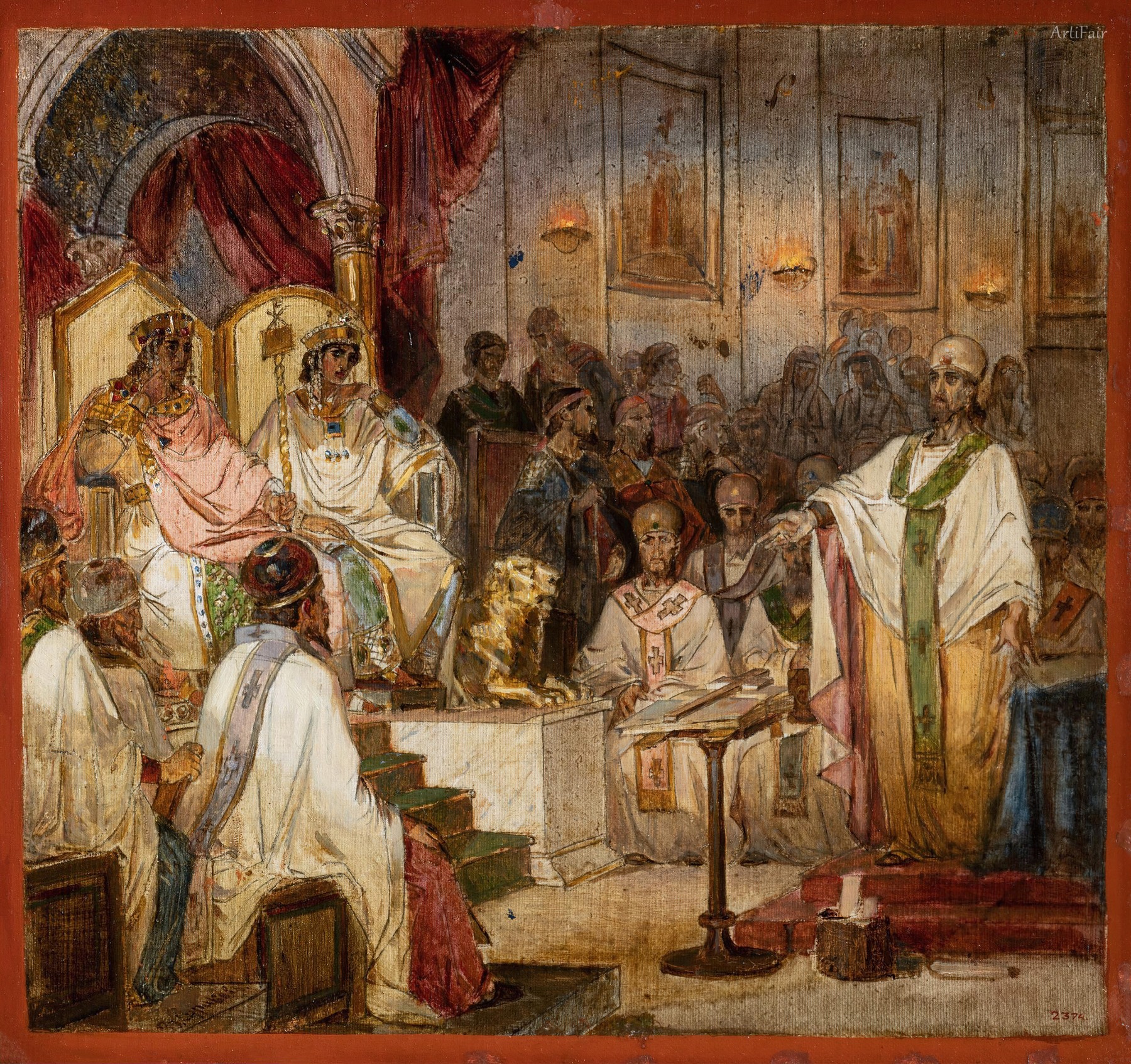
Art Appreciation
The artwork is a powerful depiction of a significant historical religious event, illustrating the Fourth Ecumenical Council held in Chalcedon in 451 AD. The composition invites viewers into a tense moment filled with eloquence and decisiveness, as various figures surround the prominent leaders seated on elevated thrones. The two central figures, draped in lavish robes, undoubtedly symbolize authority and divine insight, their expression betraying a mix of solemnity and expectation. In contrast, the crowd, made up of clergy and laypeople, reflects a variety of emotions, from reverence to curiosity, each face telling a different part of the story.
The color palette is dominated by warm, rich tones that engender a sense of gravitas, while the interplay of light across the scene highlights the figures and draws the eye to focal points—most notably the poised speaker, who gestures passionately as he addresses the assembly. The use of shadow deepens the sense of dimension, and the intricate details of the attendees' attire suggest a blend of historical acknowledgment and artistic flair. Ultimately, this painting captivates onlookers, immersing them in the tumultuous blend of doctrine and human emotion inherent in religious discourse. The artwork not only serves as a historical representation but also evokes a resonance of timeless debates regarding faith and governance.